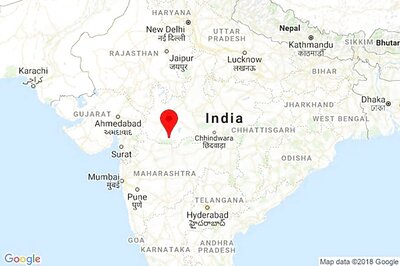
views
CHENNAI: Whether we are dusting off a portrait, putting together torn pages of an old book with cello-tape, carpeting a floor, or renovating a building, we may not even realise what kind of damage we are actually causing when trying to preserve something important. But then, what exactly is the conservation of art? Does it mean preserving it as it is, or bringing it back to its original form? Could restoring a piece of art mean replacing it altogether? These topics formed the hour-long image-intensive presentation on ‘Art Conservation – Breathing New Life into Damaged Artefacts’ by art conservator Aparajitha VR, and was organised by The Association of British Scholars Chennai and British Council. Aparajitha, a Charles Wallace India Trust Fellow, has a Masters in Art Conservation and Restoration and has been actively contributing to the field for nearly a decade.Some of her significant projects include conservation of Raja Ravi Varma paintings in Thiruvananthapuram and the Buddhist murals in Ladakh (which was awarded the UNESCO Asia Pacific Heritage Award for Conservation). She was also awarded the Nehru Trust UK Visiting Fellowship for pursuing advanced conservation training on photographic materials, a unique and highly specialised area. “While art forms could be classified as tangible (such as artefacts) or intangible (such as dance or music), in the presentation today, we are highlighting the tangible forms of art,” began Aparajitha. Be it vandalism, careless storage, exposure to harsh light, willful destruction of heritage, framing, or the simple wear and tear of time, timely intervention is important to save art. In order to understand the pigmentation, experts utilise advanced technologies like infrared reflectography, ultraviolet radiation, raking light, and x-radiography that helps in a curative conservation treatment system, says Aparajitha. “An art conservator is like a doctor who diagnoses the disease as he investigates, and during the curative conservation treatment stage, he is a cosmetic surgeon. But when doing it, he also needs to understand the aesthetics of that particular kind of art,” Aparajitha said. “An art conservator’s work is not the kind you do in an air-conditioned cubicle with plush interiors and infrastructure because you need to deal with dusting and cobwebs, nor is it very attractive remuneration-wise, but the personal satisfaction you derive when dealing with priceless forms of art is what counts.” She continued to stress that one does not need to be an artist to conserve art, only that one must have an inspiration for it. “My background in fine arts took me one day to the Government Museum in the city, where there is a conservation laboratory where I witnessed how precious art forms are conserved. That became my inspiration.”


















Comments
0 comment